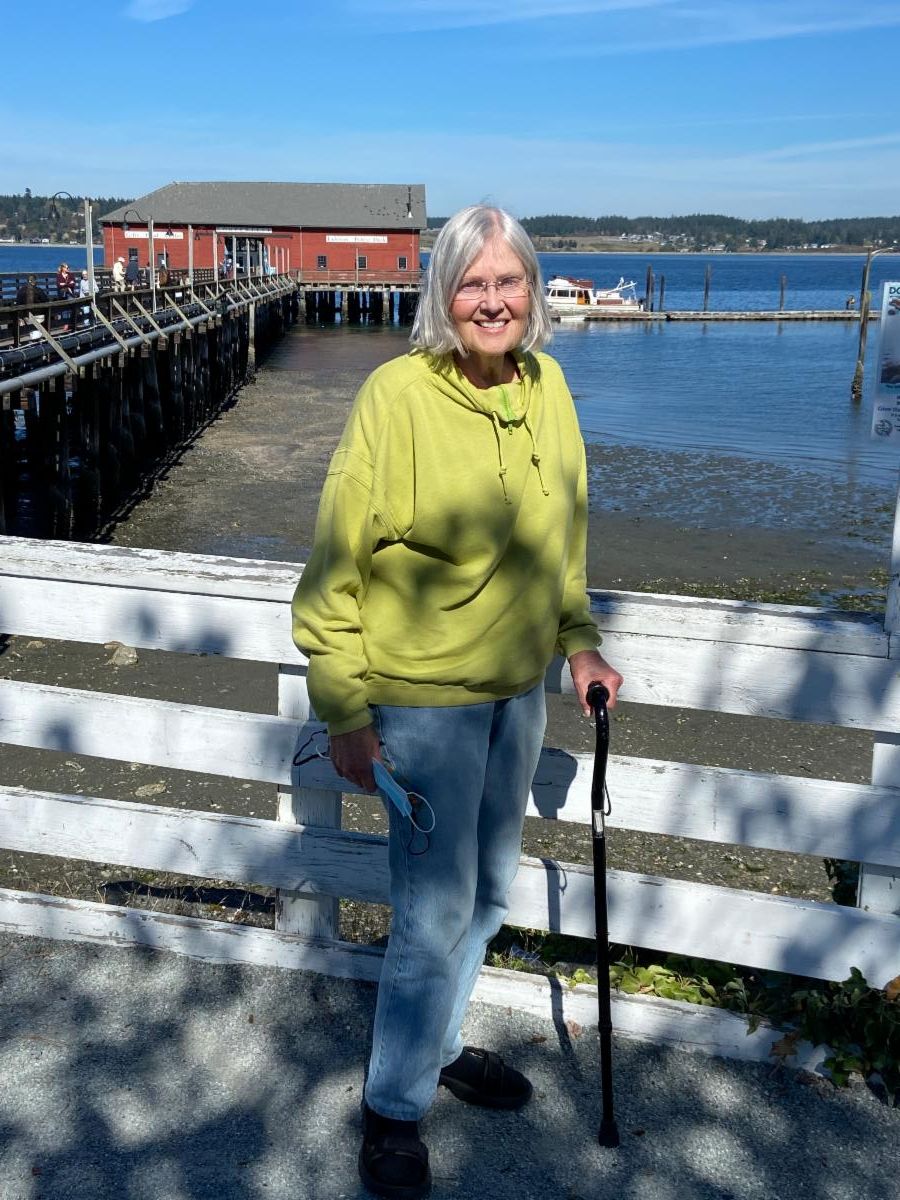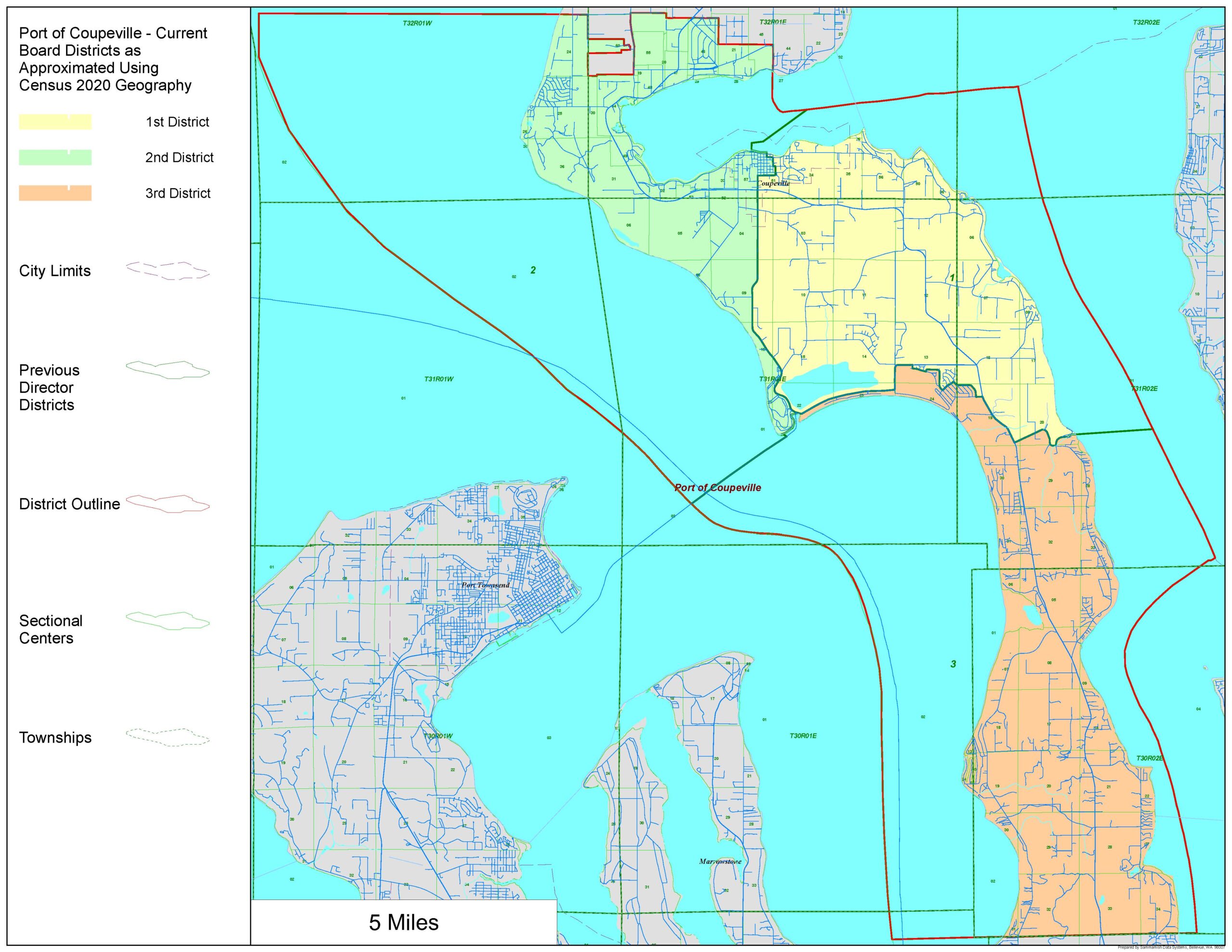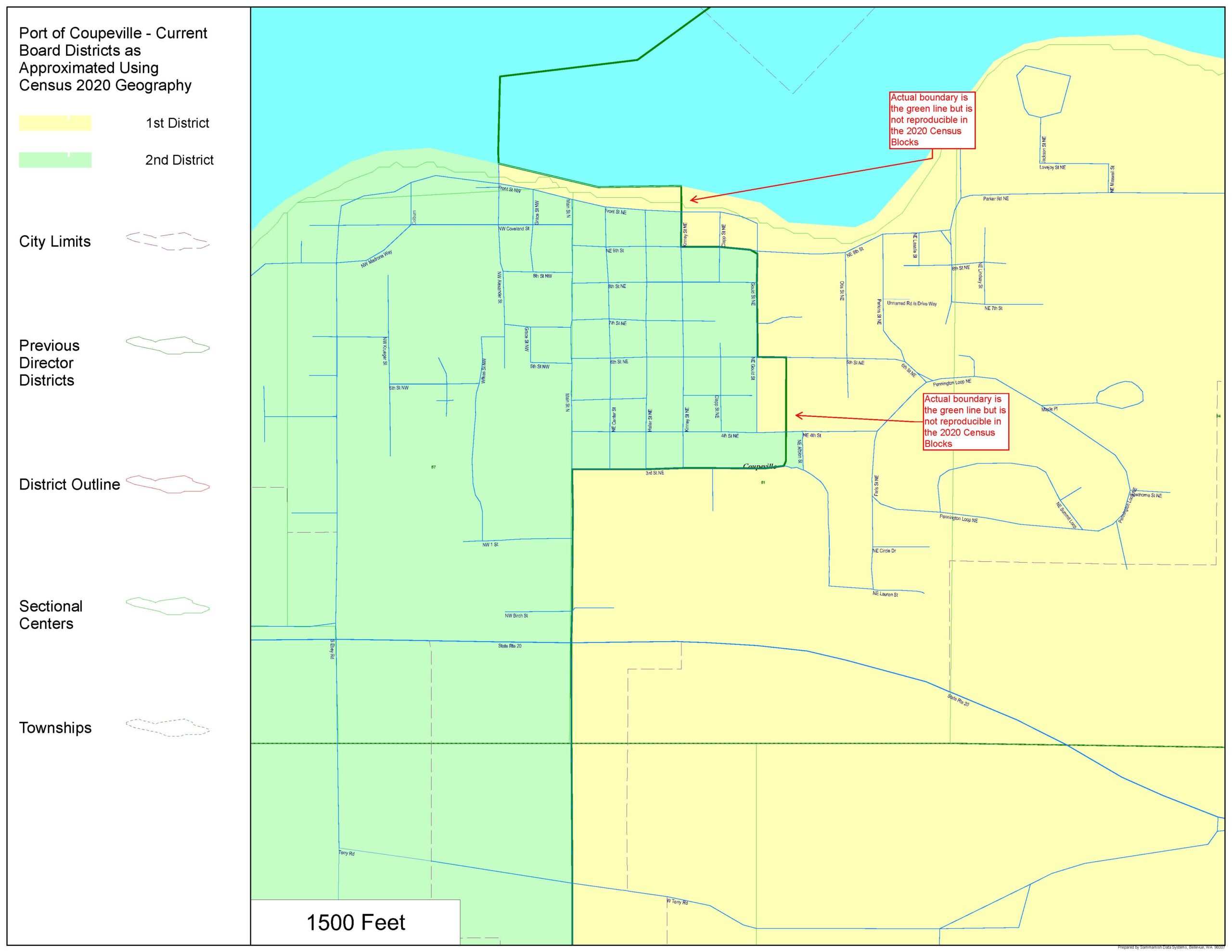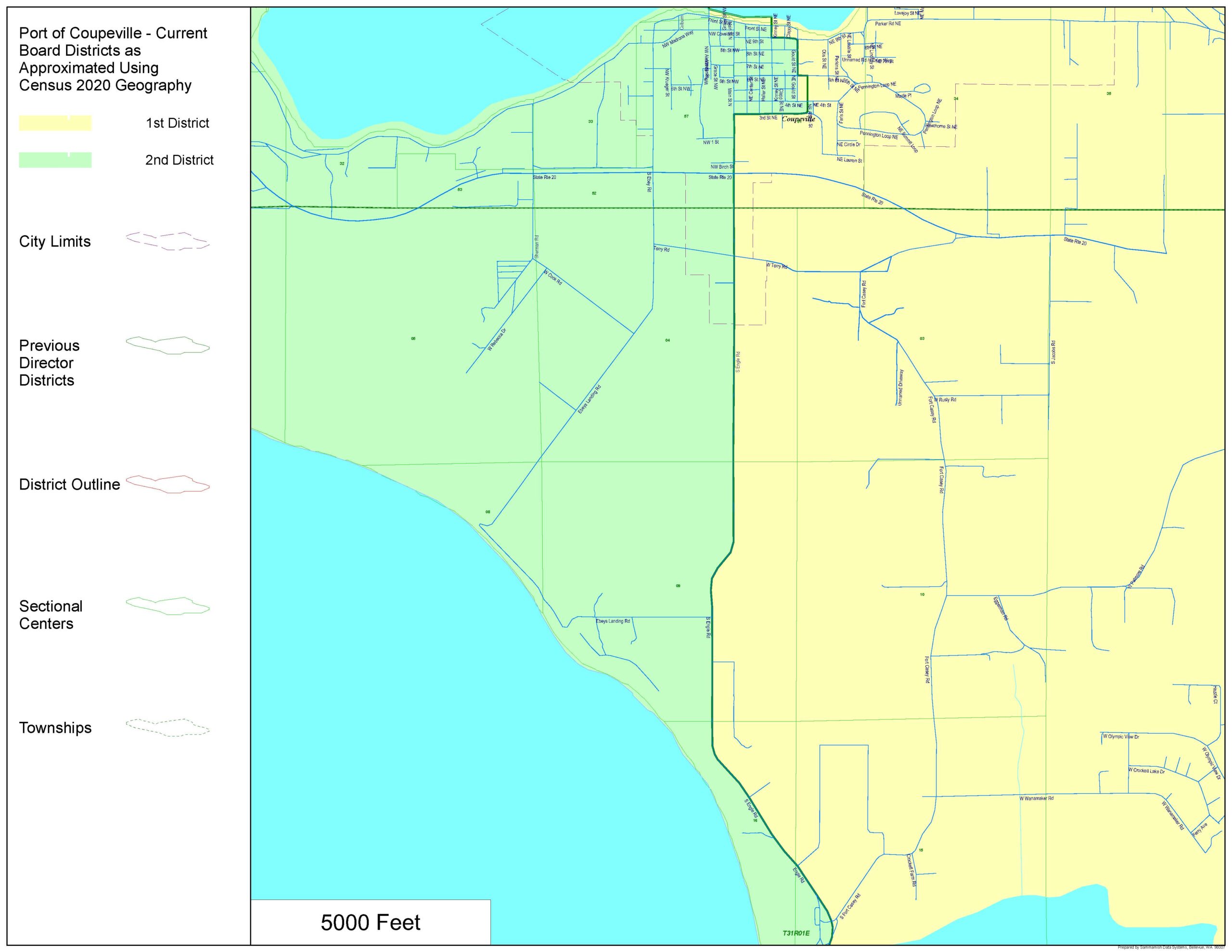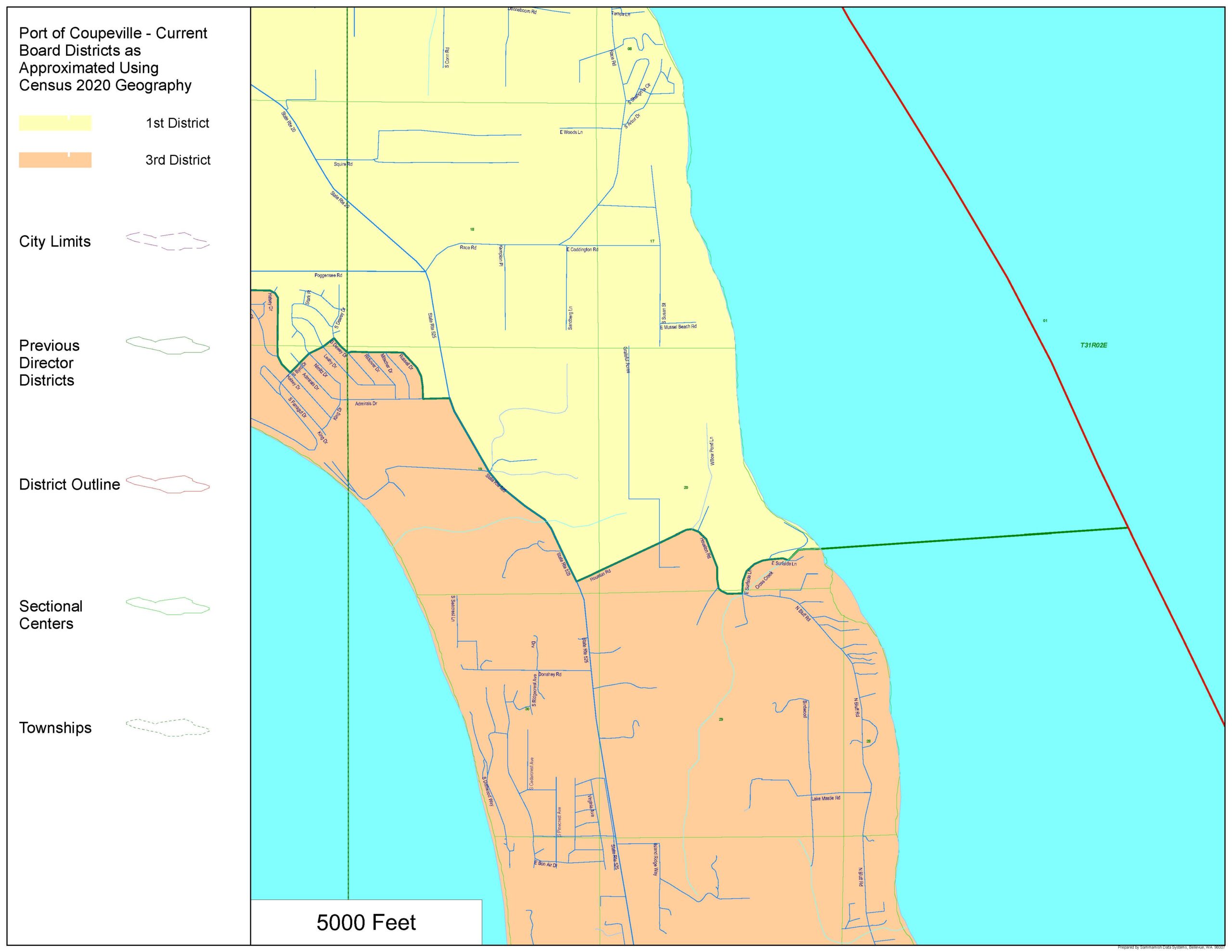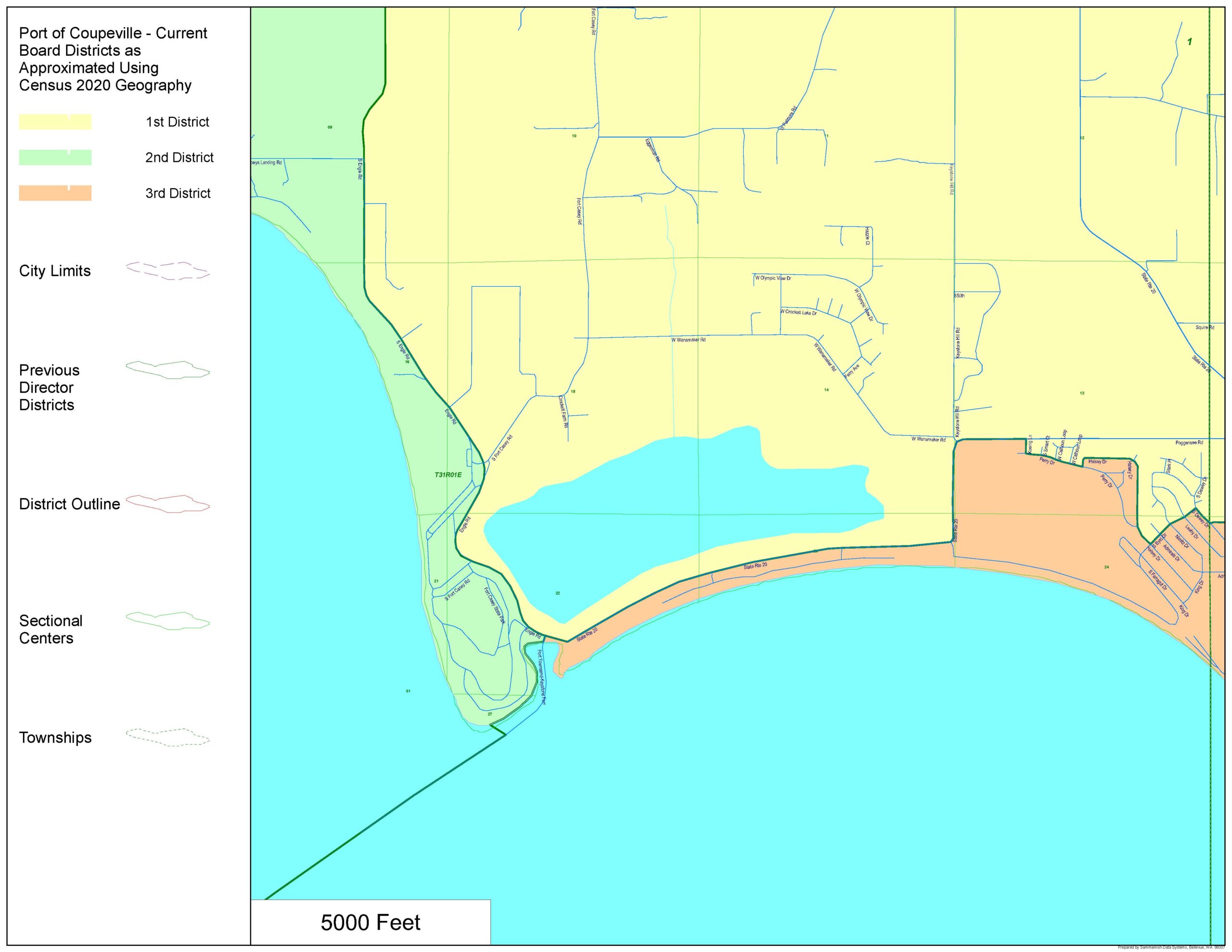About Your Port
The Port of Coupeville was established in 1966, located on Whidbey Island in the Puget Sound. It includes an area from North of the town of Coupeville to North of Freeland.
Mission of the Port
The mission of the Port of Coupeville is to exercise the powers authorized by Washington State law to sustain and enhance the economic and environmental health of the Port District through activities consistent with its values.
Vision Statement
- To be a collaborative organization, which maximizes the impact of its economic development activities by seeking community partnerships and public/private sector funding opportunities.
- To be a good steward of properties under its ownership before undertaking new development.
- To actively seek economic development opportunities that are compatible with the Central Whidbey Island culture.
Core Values
Stewardship
A commitment to protect and enhance Central Whidbey Island’s natural environment, marine resources, historic, rural and agricultural character.
Opportunity
A commitment to create sustainable economic infrastructure which supports a diverse and healthy entrepreneurial business climate within the Port District
Community
A commitment to promote public awareness and involvement in all its aspects of the Port’s activities.
Integrity
A commitment to open and honest public disclosures; the prudent and responsible management of Port resources; the ethical and conscientious exercise of its legal authority.
Anti-Discrimination Policy
The Port of Coupeville does not discriminate on the basis of race, color, national origin, disability, age, or sex in administration of its programs or activities, and, The Port of Coupeville does not intimidate or retaliate against any individual or group because they have exercised their rights to participate in actions protected, or oppose action prohibited, by 40 C.F.R. Parts 5 and 7, or for the purpose of interfering with such rights.
Chris Michalopoulos, the Port of Coupeville Executive Director, is responsible for coordination of compliance efforts and receipt of inquiries concerning non-discrimination requirements implemented by 40 C.F.R. Parts 5 and 7 (Non-discrimination in Programs or Activities Receiving Federal Assistance from the Environmental Protection Agency), including Title VI of the Civil Rights Act of 1964, as amended; Section 504 of the Rehabilitation Act of 1973; the Age Discrimination Act of 1975; Title IX of the Education Amendments of 1972; and Section 13 of the Federal Water Pollution Control Act Amendments of 1972 (hereinafter referred to collectively as the federal non-discrimination laws).
If you have any questions about this notice or any of the Port of Coupeville’s non-discrimination programs, policies or procedures, you may contact:
Chris Michalopoulos, Executive Director
Port of Coupeville, 765 Wonn Rd, Suite E (Jim Davis House), Greenbank, WA 98253
(360) 222-3688
executivedirector@portofcoupeville.org
If you believe that you have been discriminated against with respect to a Port of Coupeville program or activity, you may contact the Executive Director identified above or visit our website at www.portoc.org to learn how and where to file a complaint of discrimination.
Meet Your Port Commissioners
Marianne Burr
Commissioner District 1
Greenbank Farm Office
PO Box 128
Greenbank, WA 98253
Phone: (360) 222-3151
commissioner1@portofcoupeville.org
Mr. John Mishasek, Vice President
Commissioner District 2
Greenbank Farm Office
PO Box 128
Greenbank, WA 98253
Phone: (360) 222-3151
commissioner2@portofcoupeville.org
Make sure to Vote! Nov 4
District Boundaries
Washington Public Port Districts
The state Legislature of Washington passed the Port District Act in 1911, creating public port districts in Washington. In September 1911, the Port of Seattle became the first autonomous municipal corporation in the nation to engage in port terminal operation and commerce development. The formation of the Port of Grays Harbor soon followed. Since 1911, more than 80 public port districts of all sizes and in every corner of the state have been created by voters throughout the state. For more information on Washington’s Public Port Districts, click here.
Port History
People have always lived near water for domestic purposes and to use it as a transportation system for people and goods. The first ports were established along the streams, rivers and harbors where peopled settled.
In 1787, our nation’s founders acknowledged the importance of waterways and their value to the growth, economy, and welfare of the new nation when they passed “The Northwest Ordinance.” This stated that the nation’s inland navigable waters were “common highways” and were “free forever.” These references to coastal harbors and entrance channels were included in the U.S. Constitution when it was adopted in 1789.
Ports in Washington State evolved in much the same way as in other parts of the nation. Wherever people settled near the water, boats, ships, rafts and barges were needed to move people and goods. Docks, floats, piers, gangways and other conveniences were built to accommodate watercraft traffic. Most of Washington’s early port facilities were privately owned. Those who owned the waterfront amenities controlled movements and the associated costs. In many regions private monopolies existed and prices were established accordingly.
Waterfront monopolies in Washington were dismantled in 1889 when the new state constitution declared that beds of navigable waters belonged to the people and the Legislature could designate which of those areas would be harbors. It also provided a system for leasing waterfront tidelands and uplands in those areas. In 1911, the Legislature enacted laws that allowed the people to establish port districts and elect commissioners to administer the districts and oversee their development and operation. The Port District Act of 1911 was the climax of a long struggle to achieve public control over areas that were essentially public in their impacts, such as commerce.
Currently, there are 75 public port districts of all sizes and in every corner of the state. While many port laws have changed since 1911, the most important provisions still remain.
Read more about Coupeville and Island County history at these links:
Coupeville Historic Waterfront Association



